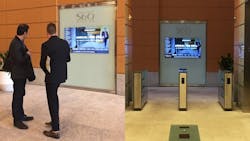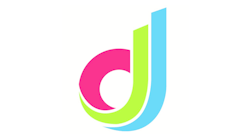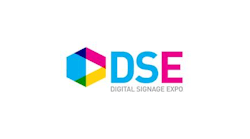Although often relegated to the back seat, the process of content creation drives the success of a digital signage program. It is therefore essential to develop a mental map of each component stage, from strategizing and budgeting, through development and optimization, and to address the unique requirements and challenges of each one. With a clear plan in place, potential stall-outs are easily avoided, and obstacles, overcome. What follows is a collection of tips and tricks that we have developed in the course of our experience, and found helpful in navigating some of the difficulties that inevitably accompany a creative undertaking. We here pass them on to you to help better position you for your next endeavor.
Obstacle #1: Project Ownership
The nature of project ownership is critical and, unfortunately, often blurred in understanding. Is the person being said to "own" a project responsible, by definition, for all aspects of its design and production? In a word: no! Rather, they manage and monitor the numerous interlocking parts of the creative engine - the gathering of assets, messaging, design, and approval — each of which is the domain of a different person, or team. This last, the granting of approval, is generally understood, and intended as the concluding step. However, its finality hinges upon the clear delineation and coordination of the preceding steps, without which requests for further changes are far more likely to arise. Changing even one textual element could disrupt the flow, look and feel of the whole product, and force the designer to go back and rework it from the ground up to accommodate the change.
Obstacle #2: Content Strategy
Designers create content within "closed environments;" they alone experience, and interact with their creations during the design process. Yet given that their creations are ultimately destined for display in "open environments" subject to such variables as viewing distance, demographics, audience journey, time of day etc., it's important to keep in mind that every content piece adhering perfectly to fundamental principles of design in the abstract carries no guarantee of effectiveness when it goes "live." All these variables, and more, should be researched and applied to your content: type, structure, design, refresh rate etc. as they will deeply impact the audience engagement with, and effectiveness of the intended message.
Obstacle #3: Playlist Strategy
Optimizing your playlist requires the delicate counterbalancing of numerous considerations, all within the framework of your budget and network objectives. Loop length, for example, must be in step with audience dwell time. Make your playlist too long, and it will be a waste of network resources; too short, and you will forfeit network opportunities. Couple dwell time with the return rate of your audience; multiply by an effective frequency of 4-7 (the number of times a viewer needs to be exposed to a message before it is thoroughly communicated); and add to that any wish to day-part, or employ triggers, feeds, or logic that activates different content depending on the time, or viewer body-language or demographics and you will begin to get the measure of what it is to develop a strategic plan that truly capitalizes on the possibilities of digital signage.
Obstacle #4: Gathering Assets
The process of gathering assets is more complicated than the phrase would suggest, as they are not, in fact, necessarily useable simply by virtue of being "digital" — a reality difficult to concede for clients unfamiliar with concepts such as image quality, and display resolution. Fortunately, a little proactive education explaining such fundamentals within the specific context of your plan to develop content for a client (using which editing program, and in which output format) often goes a long way towards bringing about the submission better-quality files, even if they are not all vector graphics, files of 300dpi or more are ideal. Of course, there is always the possibility that there are no usable assets to uncover. Sometimes the image quality of a graphic is too poor, or the asset does not exist in a version that supports editing, requiring you to start from scratch. The bottom line is: avoid assuming anything about your client's level of knowledge or organization, and be prepared to explain why their idea and/or materials may need to be scrapped or revised.
Obstacle #5: Content Licensing
Content licensing does not abide by the "finders, keepers" rule. Possession of an asset does not necessarily confer the right to display it in a commercial setting, even if it was acquired "for free" - a reality sometimes difficult to accept in a world where side-stepping costs is so often possible. However, several lawsuits over the years have been brought against digital signage companies whose network owners failed to negotiate an agreement (either in the form of a one-time payment, or an ongoing subscription) with the owner of every asset in their playlist. Given the costs incurred by such a lawsuit, it's essential to address licensing costs early and often, and to ensure that a line item appears in the budget from the very beginning. "But that CNN feed says that it's free..." Look again at the terms. Free news feeds, and most free or inexpensive weather feeds are available only for non-commercial use.
Obstacle #6: Creative Budgeting
Talking money is like talking politics: everyone has an opinion, and no one is right. The question of budget must therefore be addressed both early in the development process, and regularly throughout the lifecycle of a project, for content carries a cost not only to create, but to maintain. The viewing frequency, and relationship it bears with its physical context give it a limited shelf-life, and while you would ideally have a surplus of content from which to chose, and/or assets with an automated feature, the project will, in fact, require ongoing programming, editing and management. True, most CMS (content management systems) now support advance scheduling, but someone still needs to oversee that task. The success or failure of a digital signage project therefore will depend on the project owners ability to accurately and creatively manage the fixed initial costs and variable ongoing costs to collect, license, and schedule content assets all powered by the most costly line item: human capital.
Obstacle #7: Stretching the Dollars
Were money not an obstacle, we would all simply hire ABC or Lucasfilm to build out our playlists, and keep them fresh. But money is an obstacle. Budgetary constraints come into play for everyone at some point. That is why I am a proponent of building playlists with an eye to maximizing value, as opposed to maxing-out one's resources. This can be done in a variety of ways, including investing up-front in custom templates; reusing assets that your company originally used elsewhere; leveraging user-generated, and data-driven content; strategically recycling content; and outsourcing parts of your playlist to licensed feeds or competitively priced creative agencies.
Obstacle #8: CMS and Hardware
This subject, once broached, easily leads the ensuing discussion down the proverbial rabbit hole, but my goal is simply to highlight a few of the cascading effects of your choice in CMS, and hardware. With respect to CMS, some solutions are new, and less refined due either to their time on the market, or target simplicity, and for content managers posting only simple messages, they present an appropriate solution. However, with simplicity come limitations, and complex networks may feel the lack of editing and programming options, readymade app stores, KPIs, feeds, triggers, localization, advertising market platform integration, weighted playlists and logic playback configuration. They may also feel limited by the breath of file-type options, API, security settings, reliability, remote management features, emergency messaging capabilities, etc. If so, there are other more established, robust CMS to consider.
The playback quality of the hardware you choose is also something to consider carefully, as it has a profound impact of viewers' visual engagement with your message. And finally, careful thought must be put into your connectivity strategy. Will you connect your system via Wi-Fi for which you pay with a monthly bill, or through a mobile provider that you pay by the gigabyte - a costly proposition if your playlist includes large video files or frequent content updates. There is no right answer, just the solution that best fits your content strategy.
Obstacle #9: Optimization
The effectiveness of your content is in direct measure to the quality of your messaging, so even the most thoughtfully designed content campaign can benefit from regular, controlled tests of its effectiveness. A/B testing or before and after comparisons are the easiest, most affordable kind of assessment, and can bring to light adjustments likely to increase the ROI (return on investment) of the campaign at hand. For example, how did one store do vs. the other without the promotion running or using the same content in two different locations with a slight change to the CTA? Audience engagement and reaction are surprisingly difficult to anticipate; that which is relevant, which resonates with viewers, and speaks to them in "their language" changes all the time, so if effectiveness is your end, self-assessment is your means.
Obstacle #10: Creating Value
What objective do you aim to meet by means of your digital signage network? From your viewers' point of view, a digital sign is not much different from a traditional printed sign. Both boil down to a message on a wall, and therein lies their value for audience and advertiser alike. Why then is so much attention and money diverted to the frame and mounting instead of the message? Mounts, frames, and hardware are inherently depreciating assets. It is the quality of your content strategy and execution that will make your 2-million dollar investment in digital signage worth 1 million, or 5. Funneling every piece of content through your network objective (ROO/ROI) is therefore the aim to which you should direct your primary energy as a network operator on day one and year five.
Authors Steve Glancey and Bryan Meszaros will lead the webinar discussion entitled, “Overcoming Content Challenges” when the DigitalSignageConnection.com presents its 30-minute webinar on Thursday, October 19 from 2:00-2:30pm EDT. Attendance for this 30-minute webinar is free, but registration is required at http://www.anymeeting.com/PIID=ED52DE8381473B
Steve and Bryan are members of the Digital Signage Expo Advisory Board, which addressed the question of content distribution via PoE last March. Other answers can be viewed at http://www.digitalsignageconnection.com/ask-board-content-challenges
About the Authors
As Vice President of Business Development at Screenfeed, Steve Glancey has developed a unique perspective on software and content strategy. He has worked with many digital signage software solutions, allowing him to gain an understanding of their strengths and weaknesses in relation to scheduling and managing content. Over the past five years, Glancy's team grew the company from 75 customer networks with fewer than 1,000 screens to more than 1,000 customers with more than 80,000 screens around the world. He holds a B.A. in business marketing from Bethel University in St. Paul, Minnesota in addition to DSME and DSCE certifications.
Bryan Meszaros is the CEO and Founder of OpenEye Global. His vision and interpretation of interactive and visual media has transformed OpenEye into an elite industry-leading agency. With more than 16 years of experience, Meszaros has been recognized as a global industry leader. He has been recognized by Design: Retail & Commercial Integrator Magazine as one of the most influential young professionals (under 40) in both the retail design and digital signage industries. Meszaros maintains an active involvement in both SEGD (VP Board of Directors) and DSE (Advisory Board), helping to further educate the design community on digital engagement.

Steve Glancey | VP of Business Development
As Vice President of Business Development at Screenfeed, Steve Glancey has developed a unique perspective on software and content strategy. He has worked with many digital signage software solutions, allowing him to gain an understanding of their strengths and weaknesses in relation to scheduling and managing content. Over the past five years, Glancy's team grew the company from 75 customer networks with fewer than 1,000 screens to more than 1,000 customers with more than 80,000 screens around the world. He holds a B.A. in business marketing from Bethel University in St. Paul, Minnesota in addition to DSME and DSCE certifications.

Bryan Meszaros | CEO
Bryan Meszaros is the CEO and Founder of OpenEye Global. His vision and interpretation of interactive and visual media has transformed OpenEye into an elite industry-leading agency. With more than 16 years of experience, Meszaros has been recognized as a global industry leader. He has been recognized by Design: Retail & Commercial Integrator Magazine as one of the most influential young professionals (under 40) in both the retail design and digital signage industries. Meszaros maintains an active involvement in both SEGD (VP Board of Directors) and DSE (Advisory Board), helping to further educate the design community on digital engagement.





